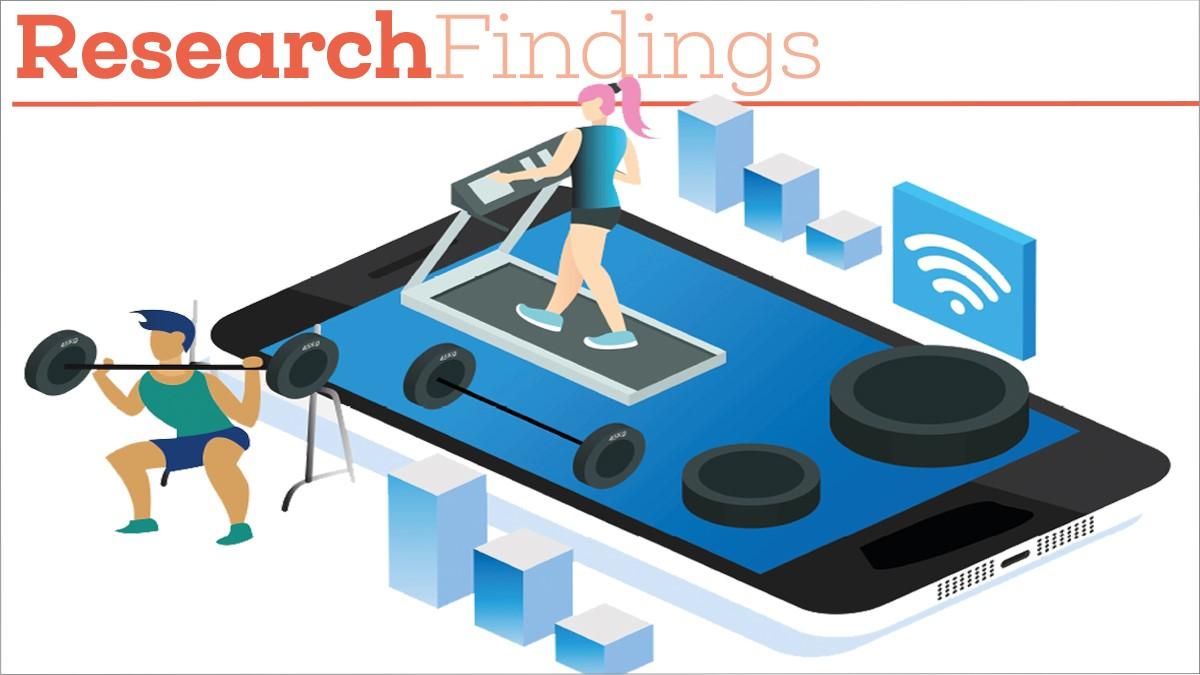This systematic review aimed to estimate the effects of standalone gamified smartphone app find out more

What’s the issue?
Many people do not meet the recommended levels of physical activity. Strategies are needed to improve motivation for increasing and sustaining physical activity levels. Gamification of smartphone apps involves using game design elements including storytelling, avatars, collection of points and mastery of challenges aiming to increase intrinsic motivation of behaviours, such as physical activity.
This systematic review aimed to estimate the effects of standalone gamified smartphone app-delivered interventions compared to a control group (for randomised controlled trials (RCTs)) or pre-post measures (for single-group studies) on physical activity in people of any age and any health status.
How they carried out the review and what’s new
Guided by a registered protocol, five databases (including Web of Science, Scopus and PubMed) were used to search for RCTs and pre-post single-group studies published in English up until 31 August 2021. Eligible studies included participants of any age and health status. The interventions were gamified smartphone apps for physical activity that did not involve additional interventions or support. For RCTs, comparator groups varied and included usual care/waitlist control, diet, physical activity trackers (for example, Calorific, Fitbit), apps (such as WeChat Sports) or lifestyle counselling. Physical activity was the outcome of interest (for example, moderate-to-vigorous physical activity, step counts). Studies involving exergames, video games or serious games were excluded.
A meta-analysis pooled the trials using standardised mean differences (SMD) to summarise and compare between-group (RCTs only) and within-group differences (pre-post measures of all intervention groups).
Nineteen studies, 17 RCTs and two pre-post single-group studies, involving 1,908 participants were included in the systematic review. Fifteen studies included adults and 17 studies were based on healthy cohorts.
Sixteen studies were included in the meta-analysis. In between-group comparisons, moderate level evidence demonstrated small-to-moderate size effects supporting the use of apps to increase physical activity (n=12 apps, SMD 0.34; 95% CI 0.06 to 0.62, I2=72%).
In within-group comparisons, very low level evidence demonstrated small-to-moderate size effects supporting the use of apps to increase physical activity (n=18 apps, SMD 0.38; 95% CI 0.17 to 0.59, I2=74%).
Why is this important?
Very low to moderate level evidence suggests that standalone gamified smartphone apps have positive effects on physical activity levels in people of all health statuses and ages, compared to usual care/waitlist control, diet, physical activity trackers, non-gamified apps or lifestyle counselling.
Using gamified smartphone applications as standalone interventions may increase physical activity. Findings support the use of digital health technologies to improve physical activity though most evidence from this review relates to healthy cohorts.
What’s next
Future research could investigate the impacts of gamified applications on physical activity by isolating the role of specific single or clustered groups of application features. Future research is required to determine which intervention features are effective in maintaining behaviour change.
The full paper
The full paper: Yang Y, Hu H, Koenigstorfer J. Effects of Gamified Smartphone Applications on Physical Activity: A Systematic Review and Meta-Analysis. Am J Prev Med. 2022 Apr;62(4):602-613. doi: 10.1016/j.amepre.2021.10.005. Epub 2021 Dec 7. PMID: 34893387.
Expert view: Alison Watt, specialist neurological and research physiotherapist at Hobbs Rehabilitation,

leads the MiNT (Masterclass in Neurotechnology) Academy which helps develop and embed technologies into clinical practice
Increasing physical activity is key for overall population health, alongside pathological management. In this sphere, technology can drive efficiency through disease prevention and rehabilitation optimisation. The potential of gamified apps is exciting and encouraging.
Smartphone applications can increase healthcare accessibility and simultaneously meet patient expectations of a health system aligned with societal technological advances. Apps can enable self-management, virtual support networks and promote high intensity activity – which all improve patient outcomes.
Although only two reviewed studies included patients, those populations demonstrated greater effects. In using technologies with neurological populations, I witness gamification increasing patient motivation and adherence to rehabilitation daily.
I believe combining technologies and conventional therapy is best practice, but notoriously difficult to research. More research is needed to aid development of clinical guidelines inclusive of health technology recommendations. Meanwhile, all therapists should consider how using apps can facilitate patient activity levels, thereby enhancing outcomes.
The MiNT Academy provides clinical education to help therapists apply neurotechnology in practice. Level 1 is free and accessed here.
Physiotherapy Evidence Database PEDro
You may be interested to read the full PEDro article about this systematic review here.
Number of subscribers: 2




































